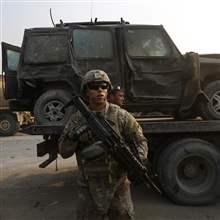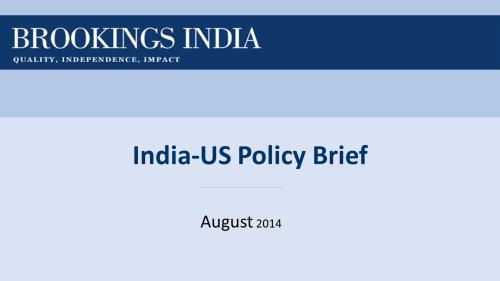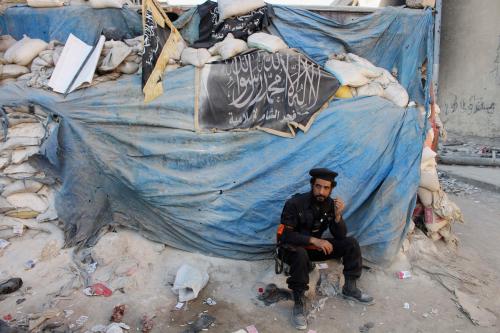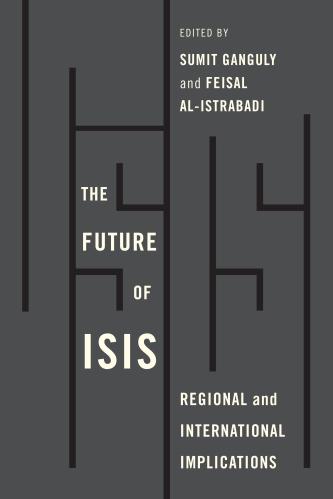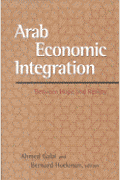Content from the Brookings Institution India Center is now archived. After seven years of an impactful partnership, as of September 11, 2020, Brookings India is now the Centre for Social and Economic Progress, an independent public policy institution based in India.
Despite President Barack Obama’s longstanding intention and preference, and despite the deep reluctance and war-weariness of the American public, he reversed his effort to “rebalance” America’s foreign policy focus away from the Middle East, and in 2014 re-committed American blood and treasure to fight violent extremism in the heart of the Arab world. This reversal, barely two years after the United States had withdrawn its last soldiers from Iraq, was driven by a recognition that the spillover from the ongoing Syrian civil war could no longer be contained, and by the horrific video-broadcasts of the beheading of two American civilians by the so-called Islamic State group. But Obama’s new commitment to the Middle East is fraught with uncertainties that are already provoking anxiety, both in the United States and in the region itself.
The first uncertainty is whether the military commitment of the cobbled together coalition, which includes the Arab Gulf states and Jordan along with France, the United Kingdom, Canada, Australia, and a number of European states, is sufficient to achieve the goals President Obama laid out in September 2014 – to degrade, defeat, and ultimately destroy the movement dubbed the Islamic State of Iraq and Syria, or ISIS. The United States has already sent more military advisers than initially planned to support a decimated and demoralized Iraqi army; U.S. officials also express doubts that sufficient “moderate” Syrian opposition forces can be trained and be fielded within the next year to help turn the tide on that front. Given these limitations, do the U.S.-led coalition partners face a slippery slope toward putting their own troops on the ground? A recent poll by Brookings scholar Shibley Telhami suggests that the American people would not support this path.
A second uncertainty is whether, even if the military campaign succeeds, the necessary politics and diplomacy efforts will follow to restore stability in these two broken states. If Arabs and Kurds, with U.S. air support, successfully push back ISIS in Iraq, can Iraq’s distrustful ethnic and sectarian groups work together well enough to keep the country in one piece? Prime Minister Haydar al-Abadi has introduced a National Guard proposal to the Iraqi parliament, but it is stalled. The majority Shi’a politicians are holding it up, but Sunni groups, fearing the resurgence of Shi’a militias, see the National Guard as a prerequisite for them to remain part of a Shi’a-dominated Iraqi state. Likewise, even if a moderate Syrian opposition successfully challenge both ISIS and the Bashar al-Assad regime in the bloody Syrian civil war, there’s still little reason to believe that Iran and Russia would end their support for Assad, that Assad would agree to join a peace process that promises to end his reign in Damascus, or that Syria’s fractious opposition factions could negotiate as a unit to achieve that goal.
The third uncertain component to the current environment is the recent horrific attacks in Paris, Nigeria and Yemen, which are a reminder that ISIS is only one dimension of a global threat from Islamist extremism. Indeed, while President Obama was persuaded that ISIS presented a sufficient threat to U.S. interests to justify a sustained military response, ISIS is only a symptom of the underlying breakdown in regional order. The upheaval in the Middle East has likewise generated newly assertive regional powers like Turkey, new opportunities for longstanding troublemakers like Iran, and bitter disputes amongst Arab states like Qatar and its Gulf neighbors.
And, of course, this disorder is itself the product of the long-gestating pressures that generated the Arab Spring – the rise of a massive, educated, but largely unemployed generation of youth whose expectations for themselves and their societies far exceeded the real opportunities they could obtain given the arbitrary, repressive, and kleptocratic leaderships that characterized the pre-revolutionary Arab state system. This generation, and its frustrations with existing political and social structures, remain. While Iraq and Syria may dominate the news, efforts to marginalize extremist movements like ISIS also demand and draw attention to other weak and failing states in the Arab world, to ungoverned spaces like the Sinai, the Sahara, and parts of the Horn of Africa, and to the need for more effective, responsive institutions of governance across the region.
Finally, the questions facing the reinvigorated American struggle against terrorism are not disconnected from other important dimensions of U.S. policy in the region – particularly the effort to prevent Iran from acquiring nuclear weapons and the attempt to mitigate, if not resolve, the Israeli-Palestinian conflict. Does the regional disorder mean that these ongoing confrontations should be of lower priority for outside powers, such as the U.S. and India? Clearly, they still matter, but perhaps less for their own sakes than as catalysts for broader violence, or arenas in which the larger regional struggle for power plays out. Thus, existing conflict zones around Israel – Gaza, Lebanon, Sinai – are likely to become hotter to the extent that they become proxy battles amongst regional actors with different visions for the regional order they seek to create. In January 2015, twin suicide bombings in Tripoli, Lebanon claimed by Al Qaeda’s Nusra Front underscored this point, while Egypt razed one of its own towns on the border with Gaza to try and weaken Hamas and contain the militant presence there. Likewise, America’s regional partners watch warily as President Obama continues to pursue a nuclear deal with Iran and carefully suggests that such a deal could unlock Iran’s reintegration into regional and international frameworks – a view that seems to underappreciate Iran’s destabilizing behavior in Lebanon, Syria, Iraq, and Yemen, or its continued sponsorship of international terrorism. Given all these uncertainties, it’s unsurprising that America’s Middle Eastern allies, although reassured by Obama’s anti-ISIS campaign, are already feeling anxious about the depth of Washington’s commitment to their concerns, and about how they might restore regional stability without the heavy hand of a global hegemon. Settle in for a long and bumpy ride.
The Brookings Institution is committed to quality, independence, and impact.
We are supported by a diverse array of funders. In line with our values and policies, each Brookings publication represents the sole views of its author(s).

